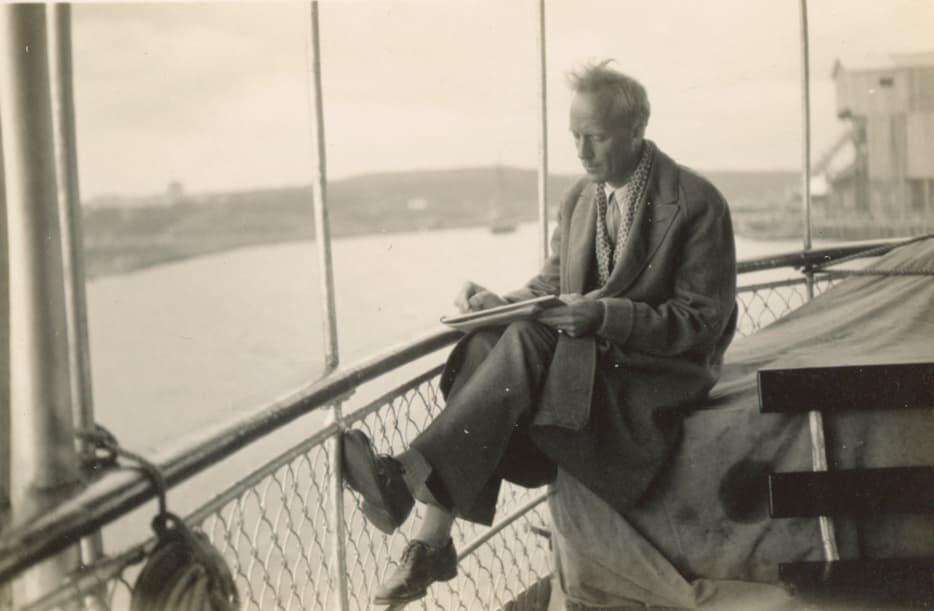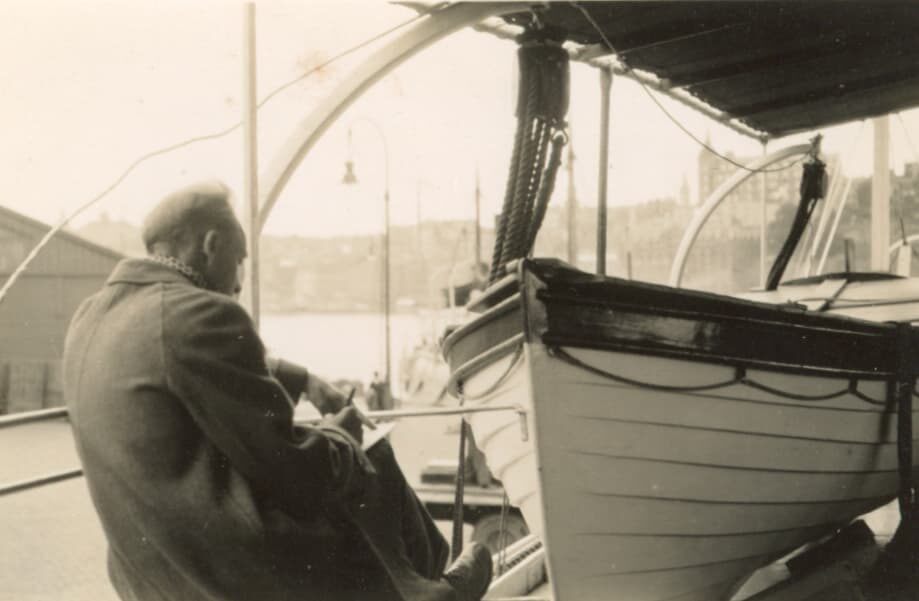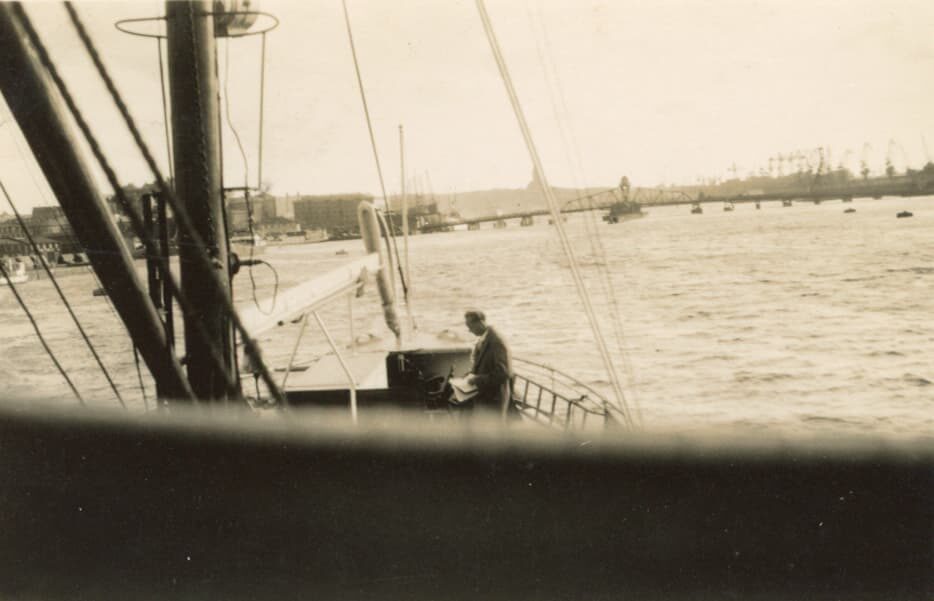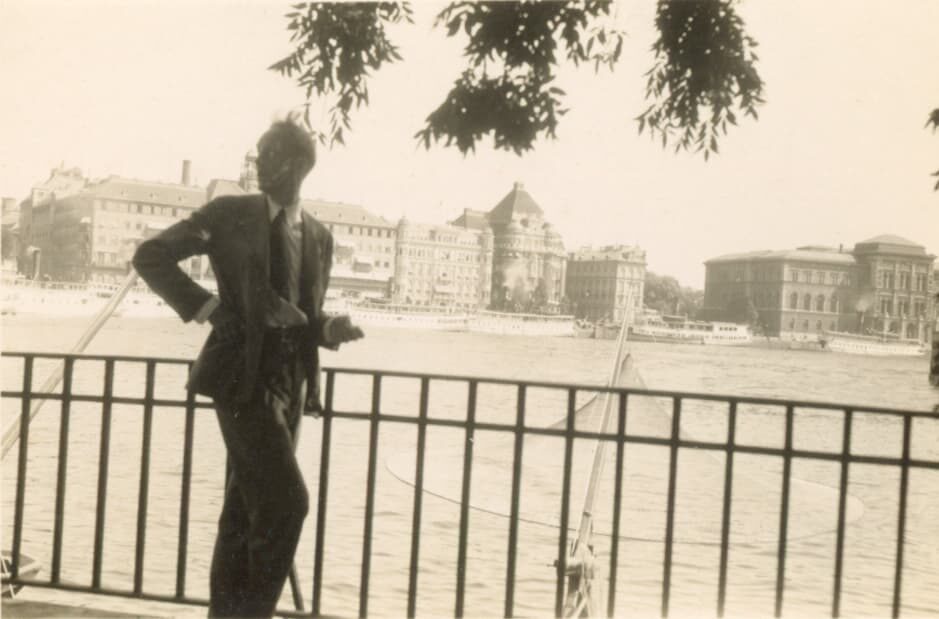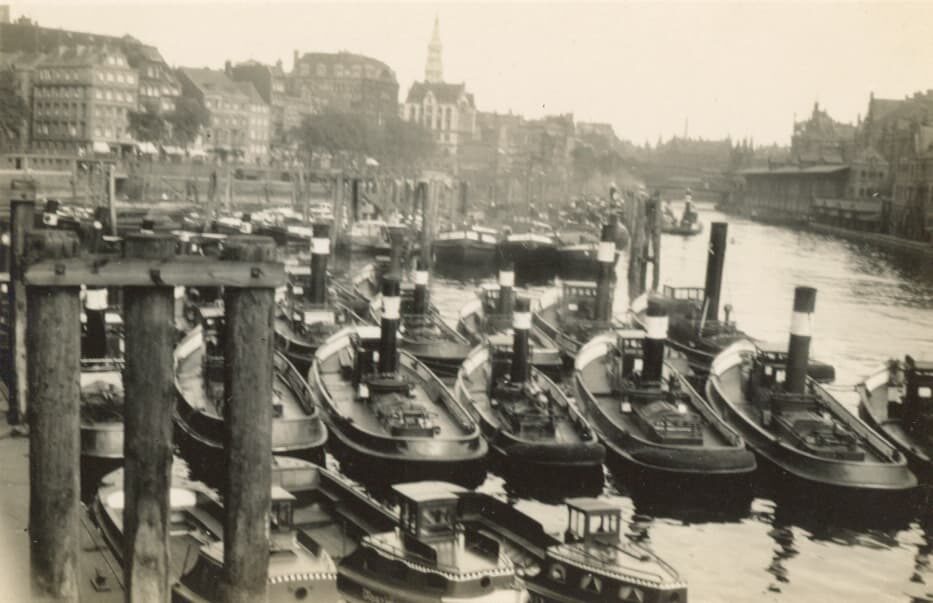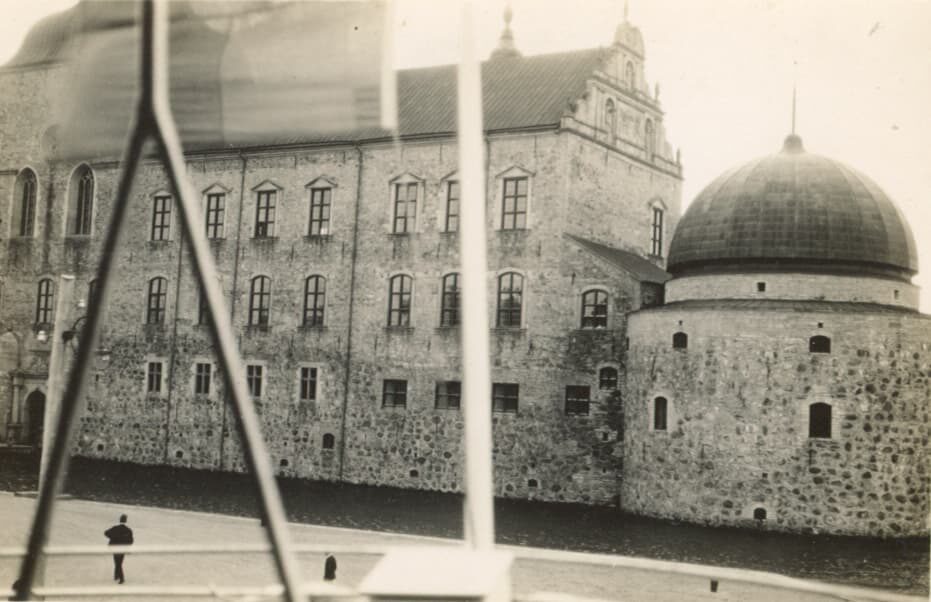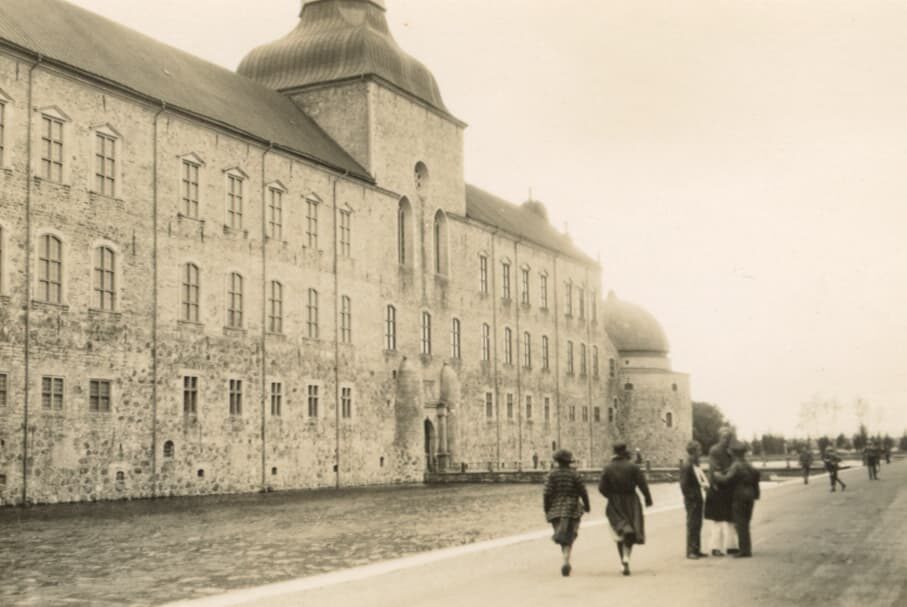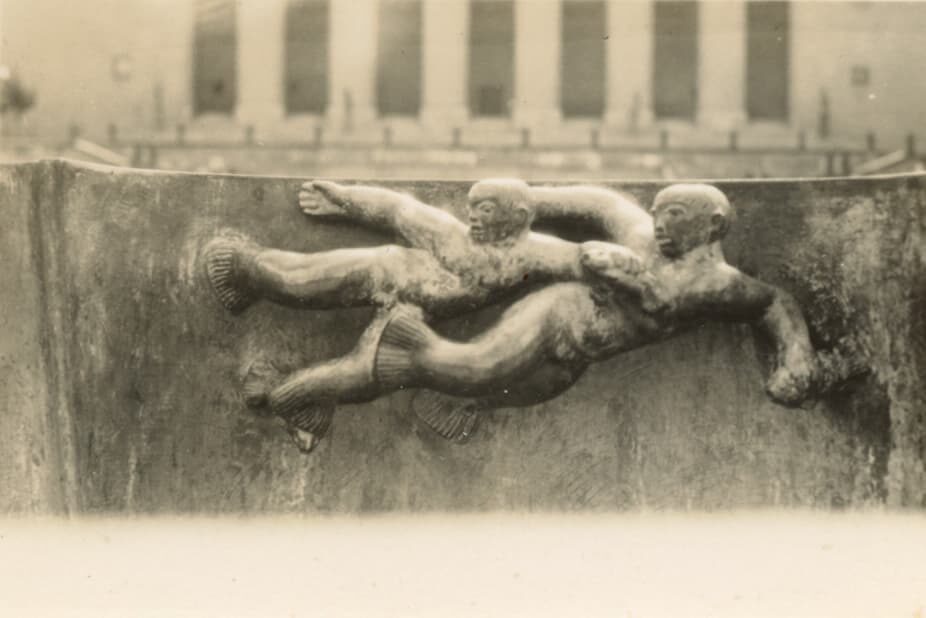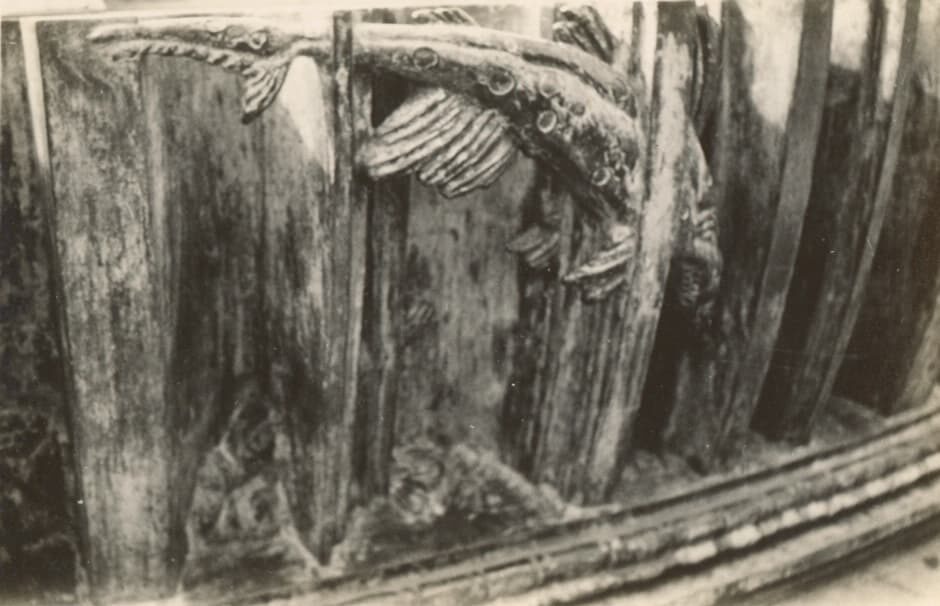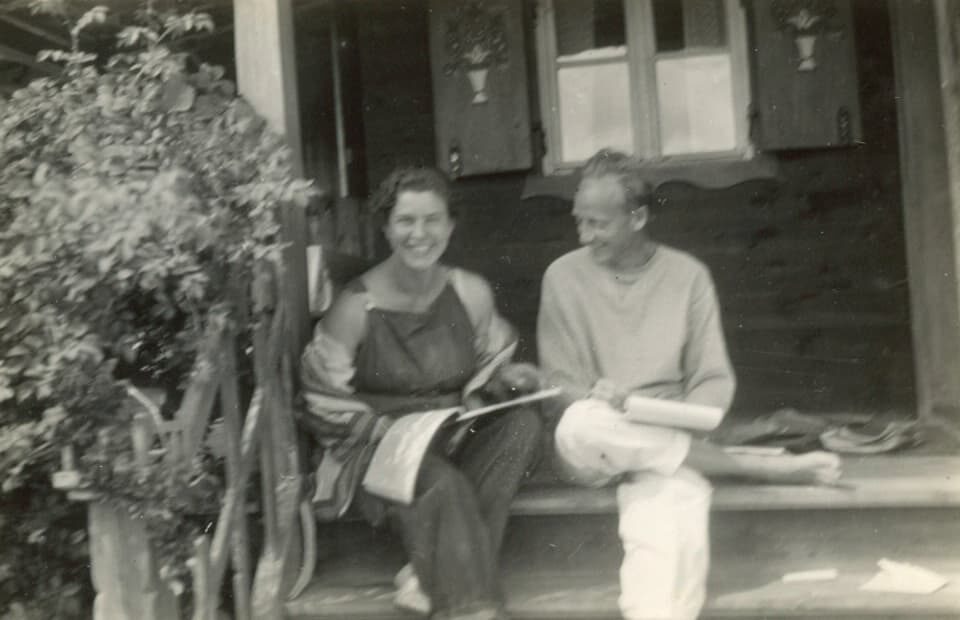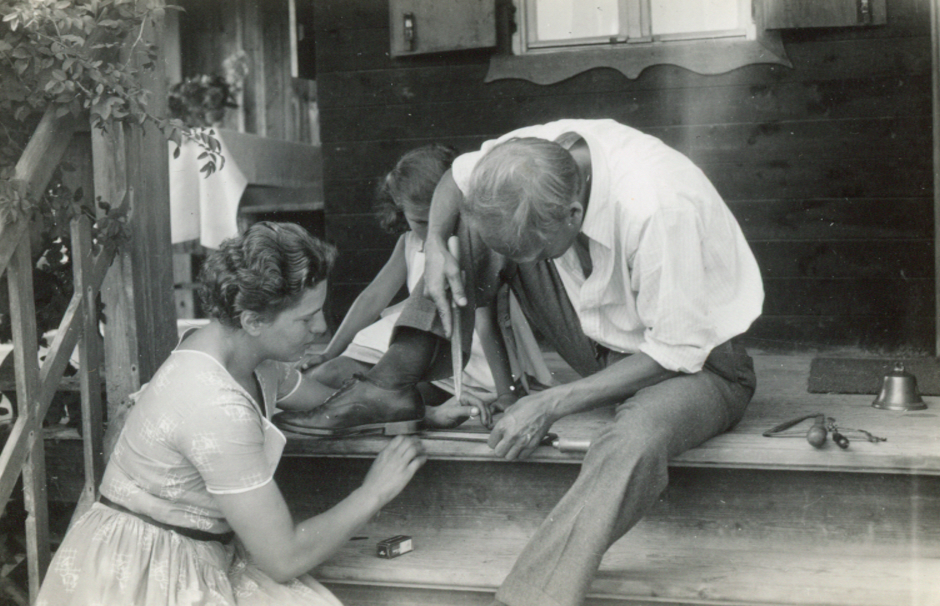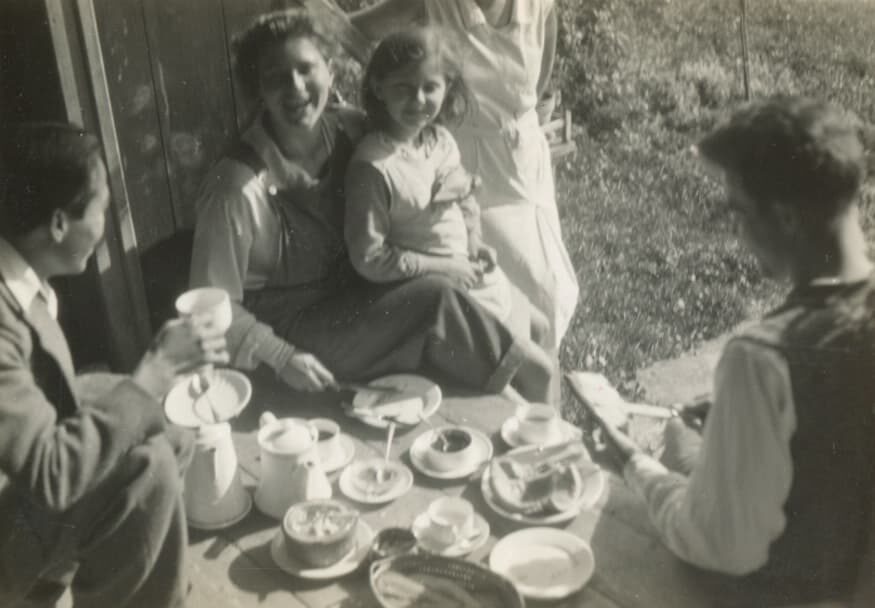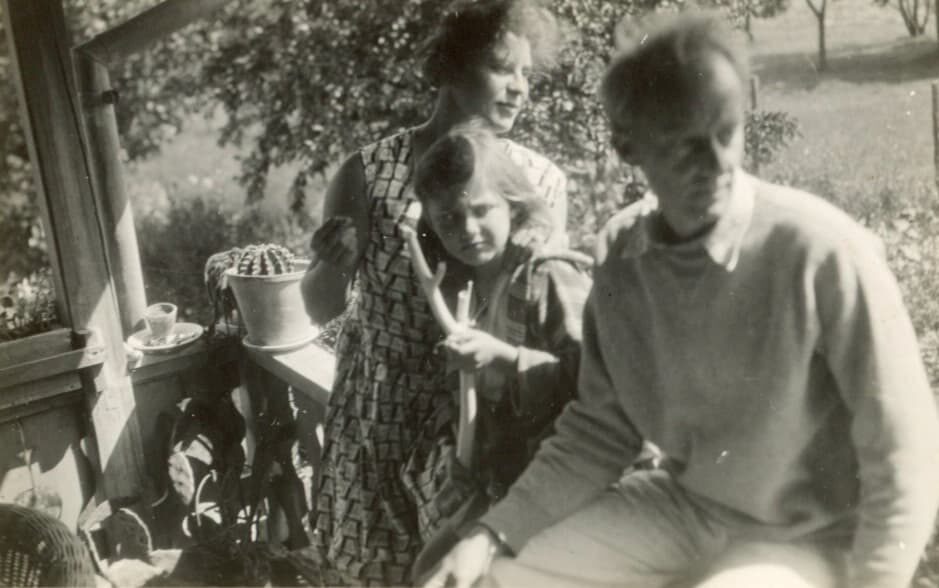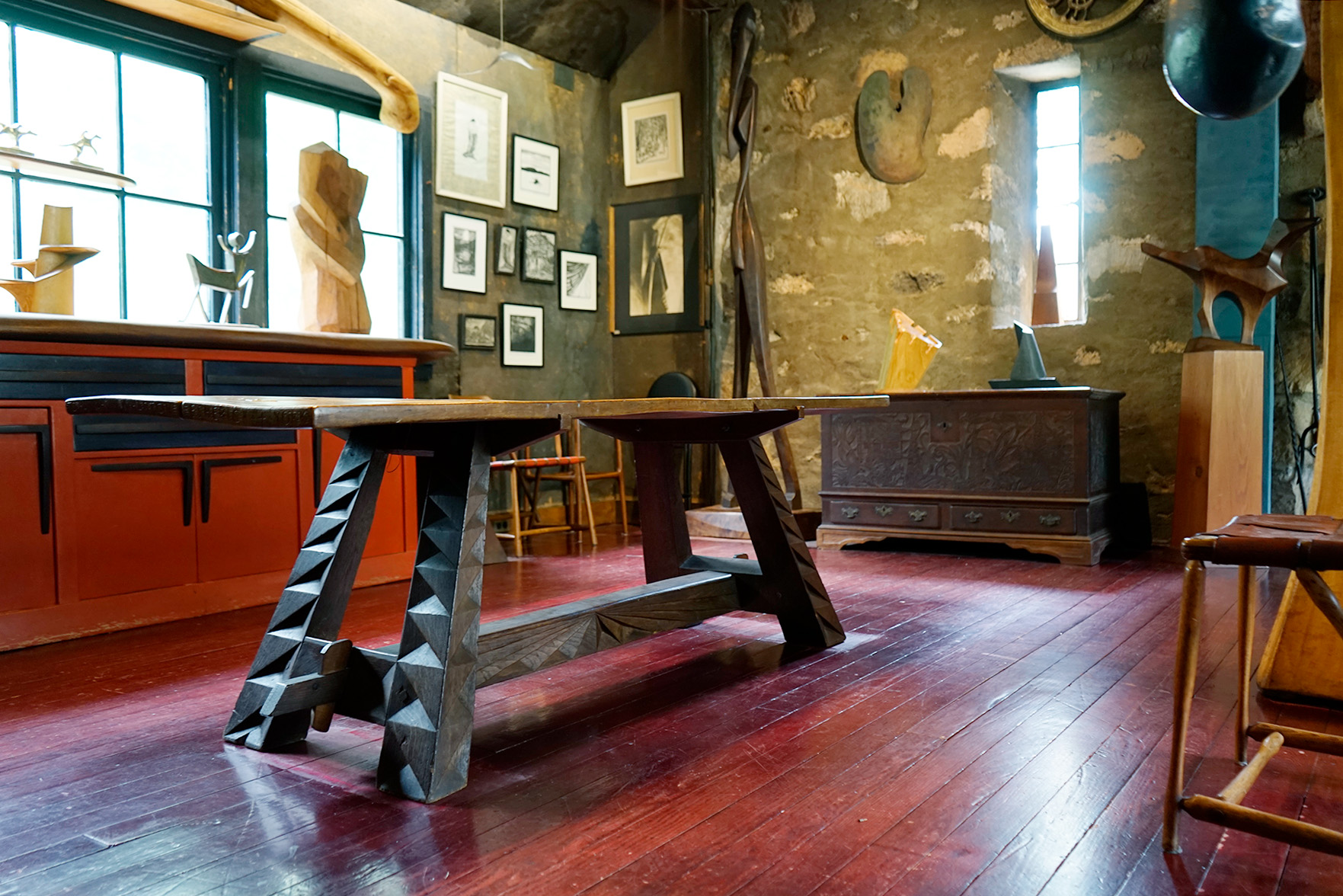March 1, 2025 – June 1, 2025
The summer of 1931 was a pivotal moment in Wharton Esherick’s career. Though he was on the verge of creating some of his most memorable furniture designs, his life weighed on him to the extent that he felt listless, in his words,“flat as a desert.” Renewal came in the form of a trip to Germany and Scandinavia that was funded by one of his great patrons, German American businesswoman Helene Fischer. Voyage of Renewal follows Esherick’s travels through Germany, Denmark, Norway, and Sweden. Drawing on WEM’s archives and collections, the exhibition features one of Esherick’s seven travel sketchbooks from the journey, historic photographs, a selection of souvenir postcards, and woodblock prints and printed textiles that he made from his sketches after returning home. Through these materials, Voyage of Renewal gives insight into the people, experiences, and sights that restored his excitement for his art and life. The exhibition is in conjunction with the loan from a private collection of the Hannah Weil Worktable (1931) –now on view in the Esherick Studio–which Esherick designed and built for German sculptor Hannah Weil during his time overseas.
This installation will be on view in our Visitor Center, which is open during our current tour hours. Please note, guests wishing to enter the Studio must make advance reservations for a tour.
… I wish you would pull yourself together. You have had some hard knocks, but like your own hand-wrought productions, look what they have done for you. Your future today is absolutely all ahead of you. I look for changing and brilliant things and I know that I will see them.
The novelist Theodore Dreiser wrote these lines to Wharton Esherick at a time when Esherick was emotionally worn—in his own words, “flat as a desert.” He and his wife, Letty, were separating. Amidst this split, a catastrophic illness left Letty disabled, prolonging the household’s final dissolution for nine years. Wharton Esherick overcame his depression during this troubled time, but not in the bootstrapping way that Dreiser had wished for. Rather, he accepted a generous gift from his patron Helene Fischer: a trip to Germany and Scandinavia that was, for him, a voyage of renewal.
In the summer of 1931, Esherick sailed from New York to Germany. From there, he traveled north to Denmark, Norway, and Sweden, and south again to Bavaria. Along the way, he filled his sketchbooks with scenes of farms, cities, people, architecture, birds in flight, and boats on waterways. Other records of his travels include his camera roll, a selection of souvenir postcards, and woodblock prints that he made from his sketches after returning home.
Esherick’s traveling companion for much of his European voyage was Hannah Weil, a German sculptor best known for her ivory carving. The two artists met through Helene Fischer, their mutual patron. Their friendship was intense to the extent that many people have speculated as to whether they were two sides of a love triangle—the third being York Fischer, Helene’s son, whom Hannah Weil later married. While visiting Hannah in the tiny Bavarian town of Holzhausen, Wharton created a decoratively carved worktable for her with York’s help. The table, on loan to the Wharton Esherick Museum from a private collection, is on display in the Studio through fall 2025.

Wharton Esherick traveling in Europe, photograph, 1931. Collection of the Wharton Esherick Museum.
From Oslo…I had bought a ticket for a week’s trip through the fjord, one of those damn tourist things where every minute is arranged for one week in advance. I missed the first two minutes. It was fate or luck—agent said he would catch me up on the party for $10 by motor. I handed him my ticket + said, refund please, or one ticket to Hamburg.
Wharton Esherick
Travel sketchbook, 1931
Pencil drawing on paper
Esherick drew voraciously while in Europe. This image shows a page in a sketchbook that is one of seven that he filled cover-to-cover with drawings. With his pencil, he captured the rhythms, textures, moods, and life of his favorite subjects—city scenes and countrysides, waterways and skyscapes, boats and buildings, people and artworks.
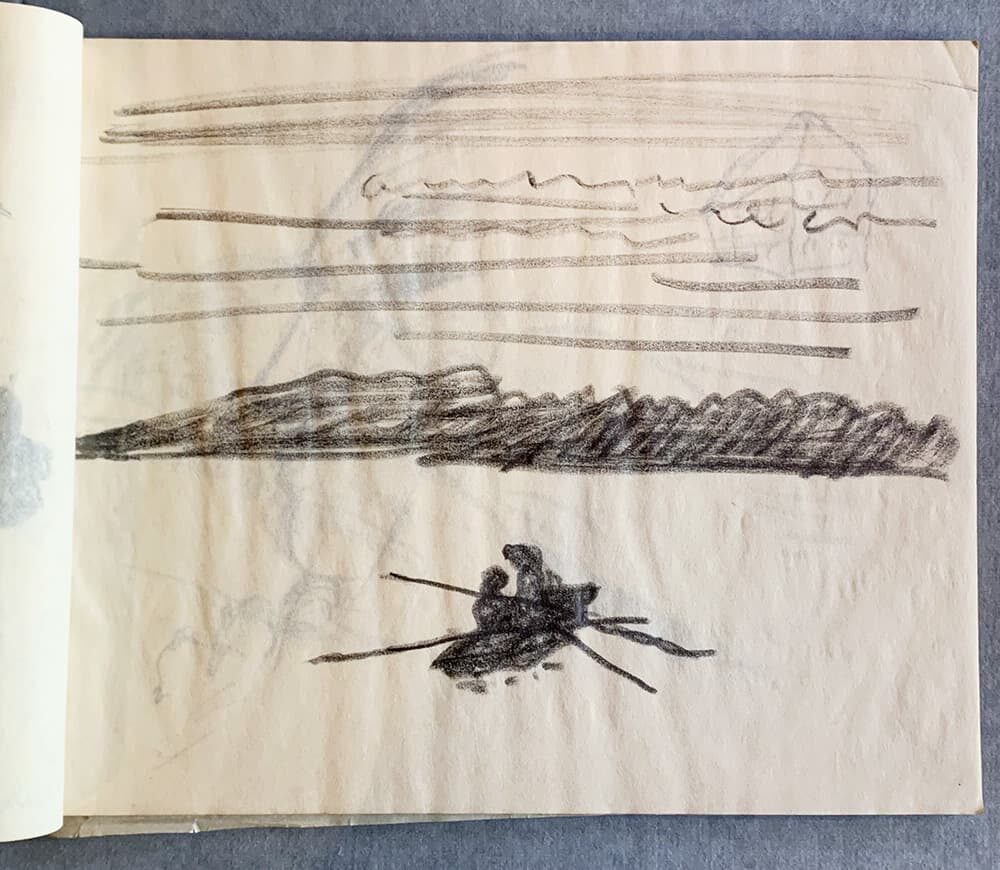
Wharton Esherick
Fjord, 1932
Woodblock print on paper
Esherick based the woodblock print Fjord on a pencil drawing from one of his travel sketchbooks. He carved the block and printed it at his Studio, soon after returning home from Europe. The scene that the print portrays is serene—two figures in a rowboat are silhouetted against the glistening surface of the glacier-carved waterway. By contrast, Esherick’s written remembrance of visiting a fjord in Norway is of a touristy boat ride crammed with travelers. By his account, he rethought his plans and abandoned the excursion just as it was getting underway.
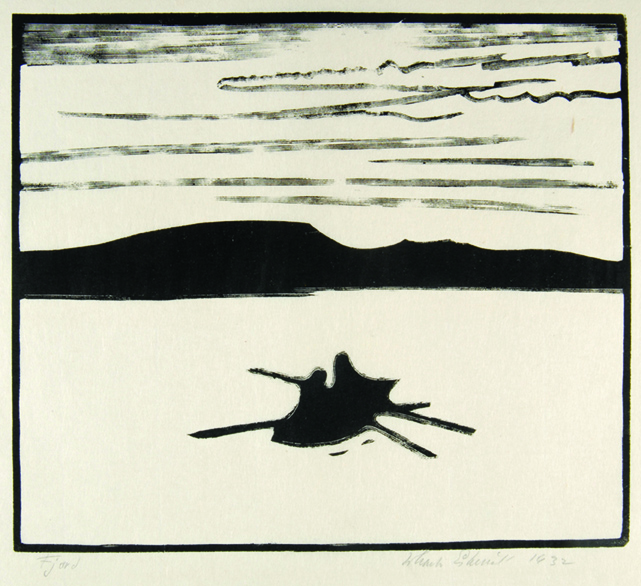
Wharton Esherick
Holzhausen, 1932
Woodblock print on paper
This woodblock print portrays a view of the Bavarian countryside from the village of Holzhausen, where Hannah Weil was living when Esherick visited her in 1931. In the print, a train travels through fields and forests; a boat floats on the waters of the vast lake, Ammersee; and the Andechs Monastary crowns a hill. Throughout the composition, Esherick’s use of angular blocks of vibrant, contrasting patterns transforms the scene into a crazy quilt of textural energy.
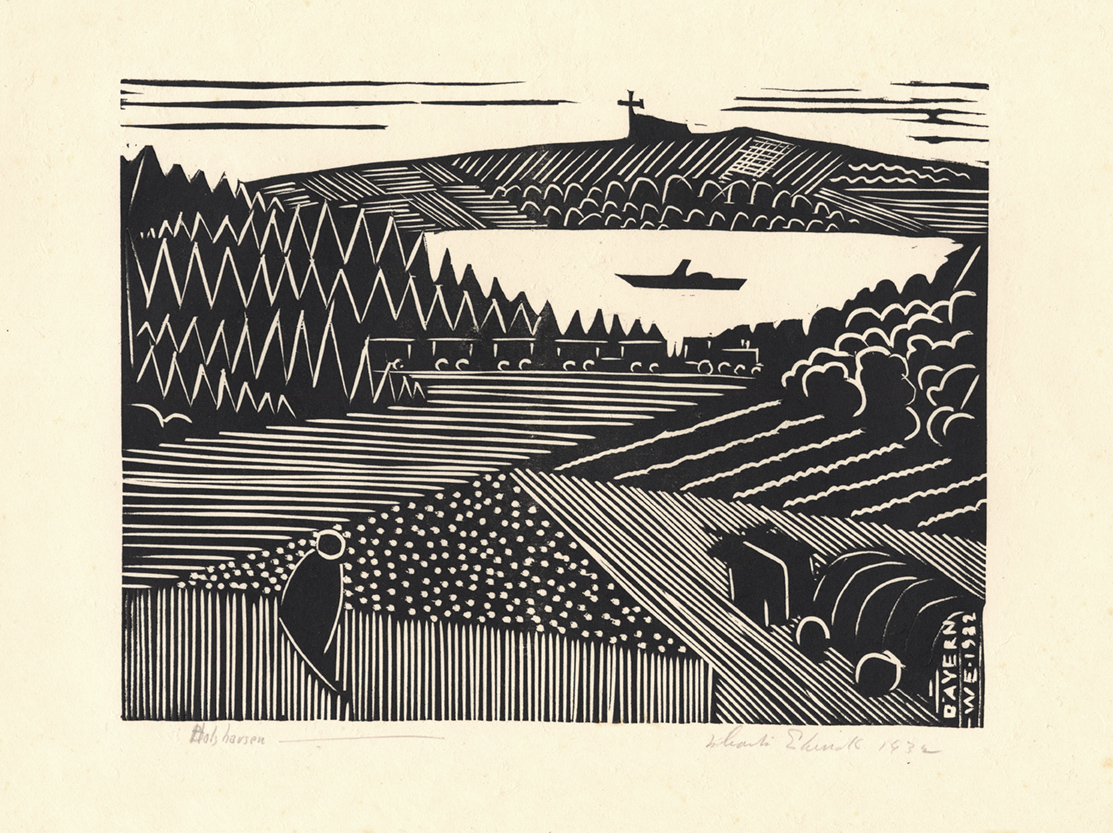
On to Oslo, there in a high point…those old Norse log houses, filled with tools, tables, beds, tankards wonderful in their simplicity + variety yet over it I felt that great love, the workman’s love of materials, love of the use of the objects, love of the family for which they were made, how they loved a log. Loved a grain house which kept their food.
Top:
Norsk Folkemuseum
Postcard, Berdalstabburet fra Nesland i Telelmark (Storehouse from Søndre Berdal, Nelsand in Telemark), circa 1930
Halftone process print
Bottom:
Emil Mostue Printers, Oslo
Postcard, Osebergfunnet. Vognen. (Oseberg Find. Cart.), circa 1930
Halftone process print
These postcards—which Esherick collected while traveling—are from the Norsk Folkemuseum, an open-air museum of Norwegian cultural heritage in Oslo. The building pictured above is a 14th-century granary that was relocated to the museum from Telemark. The wood object shown below is an 8th-century Viking cart from an excavated burial called the “Oseberg Find.” Esherick’s letters home express respect and awe over historical woodworks, such as these, that he saw in Oslo.
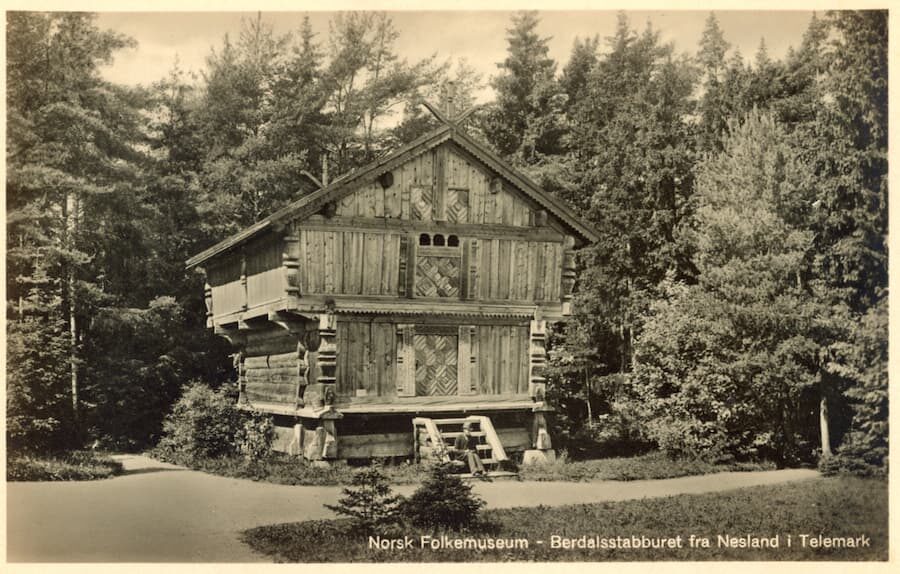
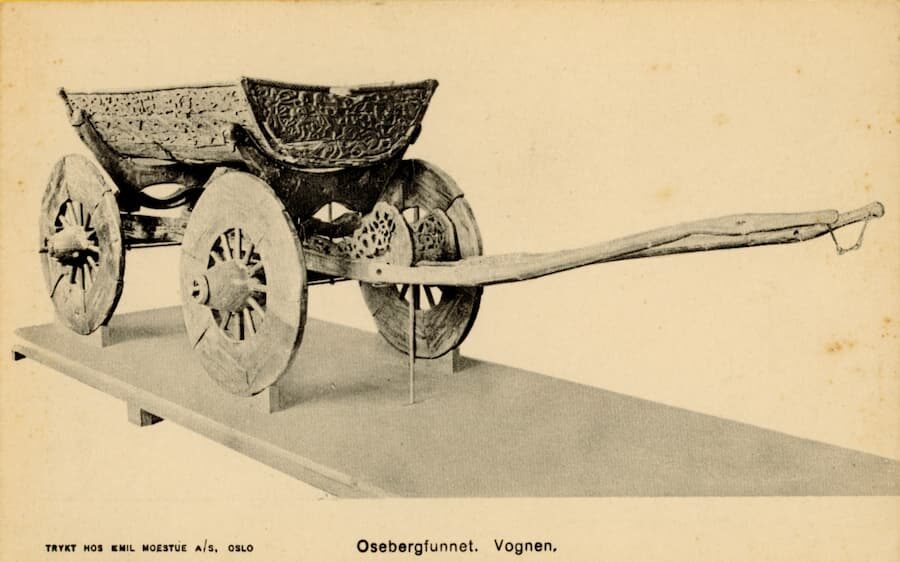
Wharton Esherick and Hannah Weil
Scanned photographs of Wharton Esherick’s travels in Germany and Scandinavia, 1931
The photographs in the album to the right are from Wharton Esherick’s trip to Germany and Scandinavia in 1931. The images bear witness to the varied subjects that caught his eye during the voyage, revealing his varied interests in European architecture and art. The photographs also document the social dimension of Esherick’s travels, capturing the time he spent among friends.
In addition to taking photographs during his travels, Esherick was himself a photographic subject—captured in the act of sketching, socializing, and posing for the camera. The pictures of Esherick that are in this slideshow were likely taken by his companions, among them German sculptor Hannah Weil, who journeyed with him from her home in Bavaria to Denmark, Sweden, and Norway.
I went back to Bavaria with friends + roamed over the countryside with Germans to villages + towns, quaint old cathedrals, magnificent farm hands in the fields. The rhythm of those German men + women in the harvest of oats or grass is like a dance.

